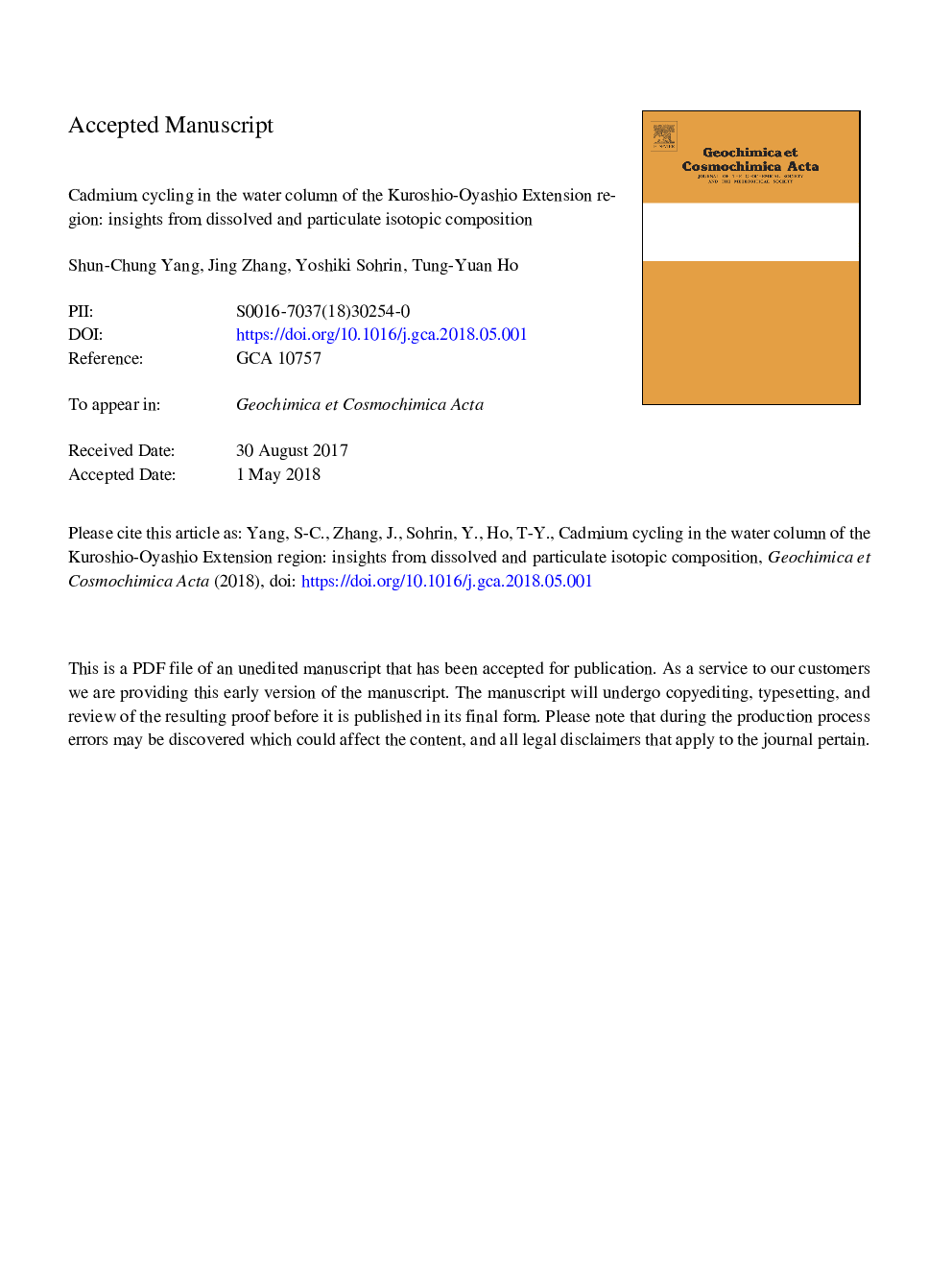| Article ID | Journal | Published Year | Pages | File Type |
|---|---|---|---|---|
| 8910710 | Geochimica et Cosmochimica Acta | 2018 | 33 Pages |
Abstract
We measured dissolved and particulate Cd isotopic composition in the water column of a meridional transect across the Kuroshio-Oyashio Extension region in a Japanese GEOTRACES cruise to investigate the relative influence of physical and biogeochemical processes on Cd cycling in the Northwestern Pacific Ocean. Located at 30-50°N along 165°E, the transect across the extension region possesses dramatic hydrographic contrast. Cold surface water and a relatively narrow and shallow thermocline characterizes the Oyashio Extension region in contrast to a relatively warm and highly stratified surface water and thermocline in the Kuroshio Extension region. The contrasting hydrographic distinction at the study site provides us with an ideal platform to investigate the spatial variations of Cd isotope fractionation systems in the ocean. Particulate samples demonstrated biologically preferential uptake of light Cd isotopes, and the fractionation effect varied dramatically in the surface water of the two regions, with relatively large fractionation factors in the Oyashio region. Based on the relationship of dissolved Cd concentrations and isotopic composition, we found that a closed system fractionation model can reasonably explain the relationship in the Kuroshio region. However, using dissolved Cd isotopic data, either a closed system or steady-state open system fractionation model may explain the relationship in the surface water of the Oyashio region. Particulate δ114/110Cd data further supports that the surface water of the Oyashio region matches a steady-state open system model more closely. Contrary to the surface water, the distribution of potential density exhibits comparable patterns with Cd elemental and isotopic composition in the thermocline and deep water in the two extension regions, showing that physical processes are the dominant forcing controlling Cd cycling in the deep waters. The results demonstrate that Cd isotope fractionation can match either a closed or open system Rayleigh fractionation model, depending on the relative contribution of physical and biogeochemical processes on its cycling.
Related Topics
Physical Sciences and Engineering
Earth and Planetary Sciences
Geochemistry and Petrology
Authors
Shun-Chung Yang, Jing Zhang, Yoshiki Sohrin, Tung-Yuan Ho,
